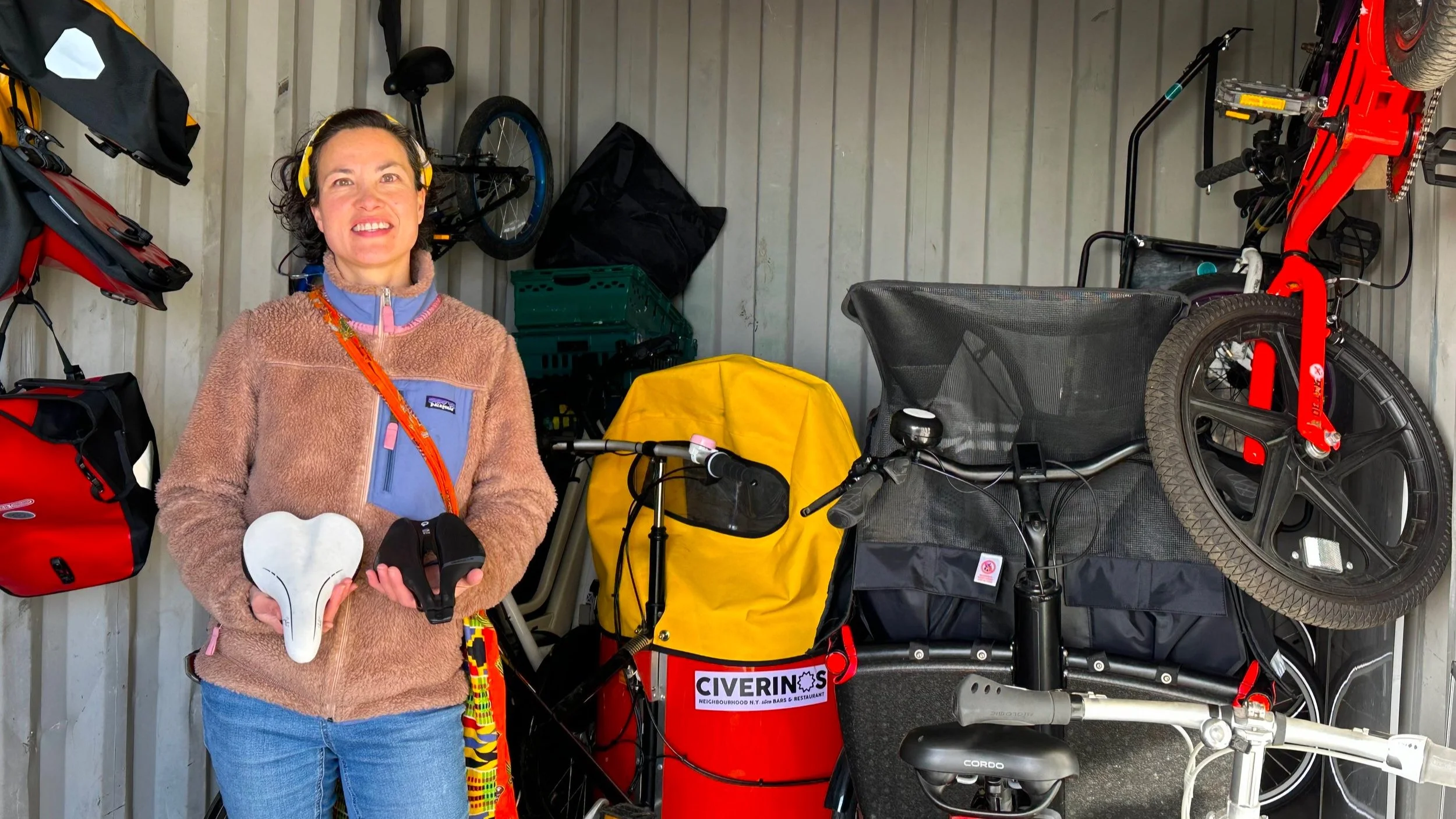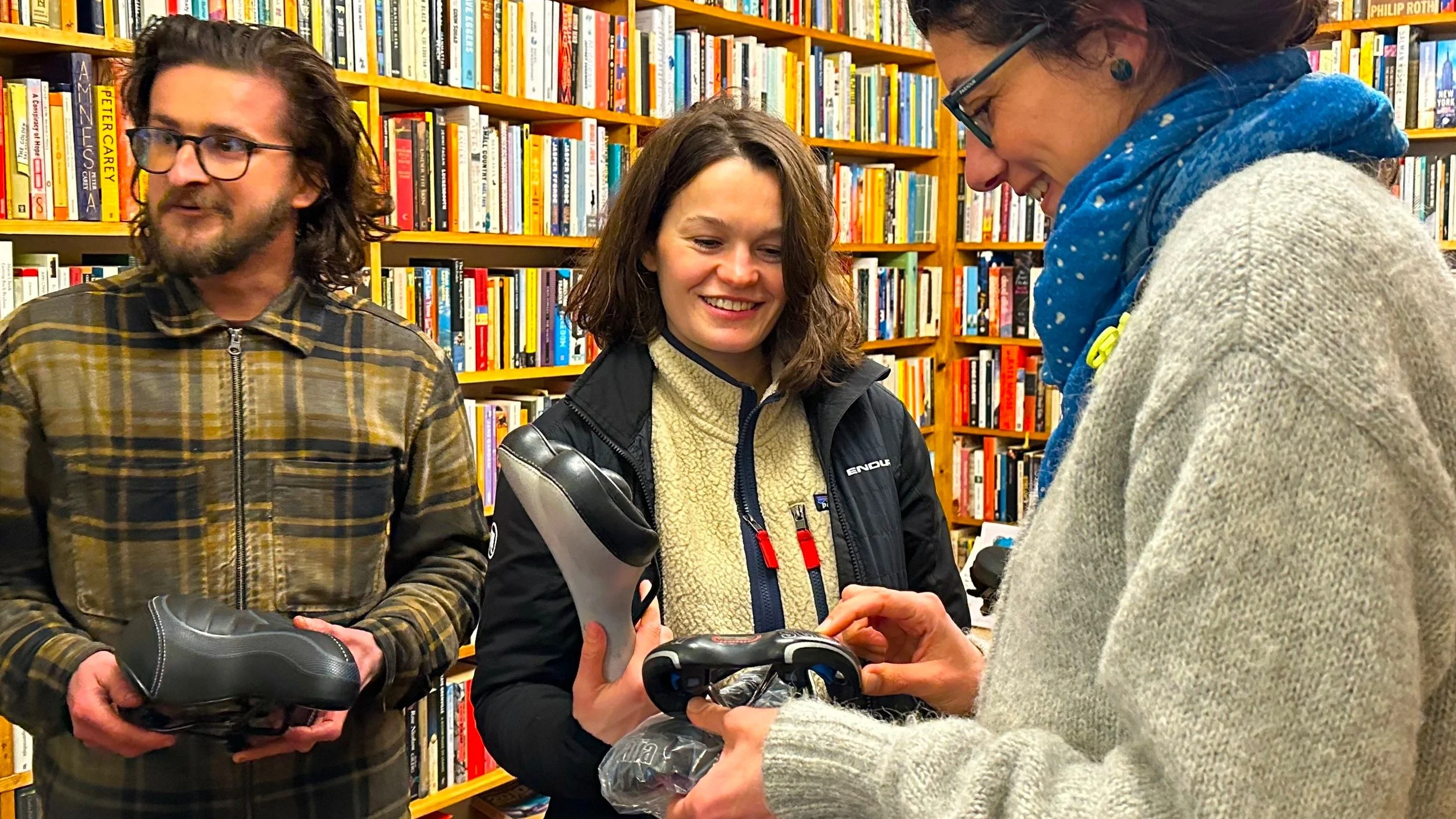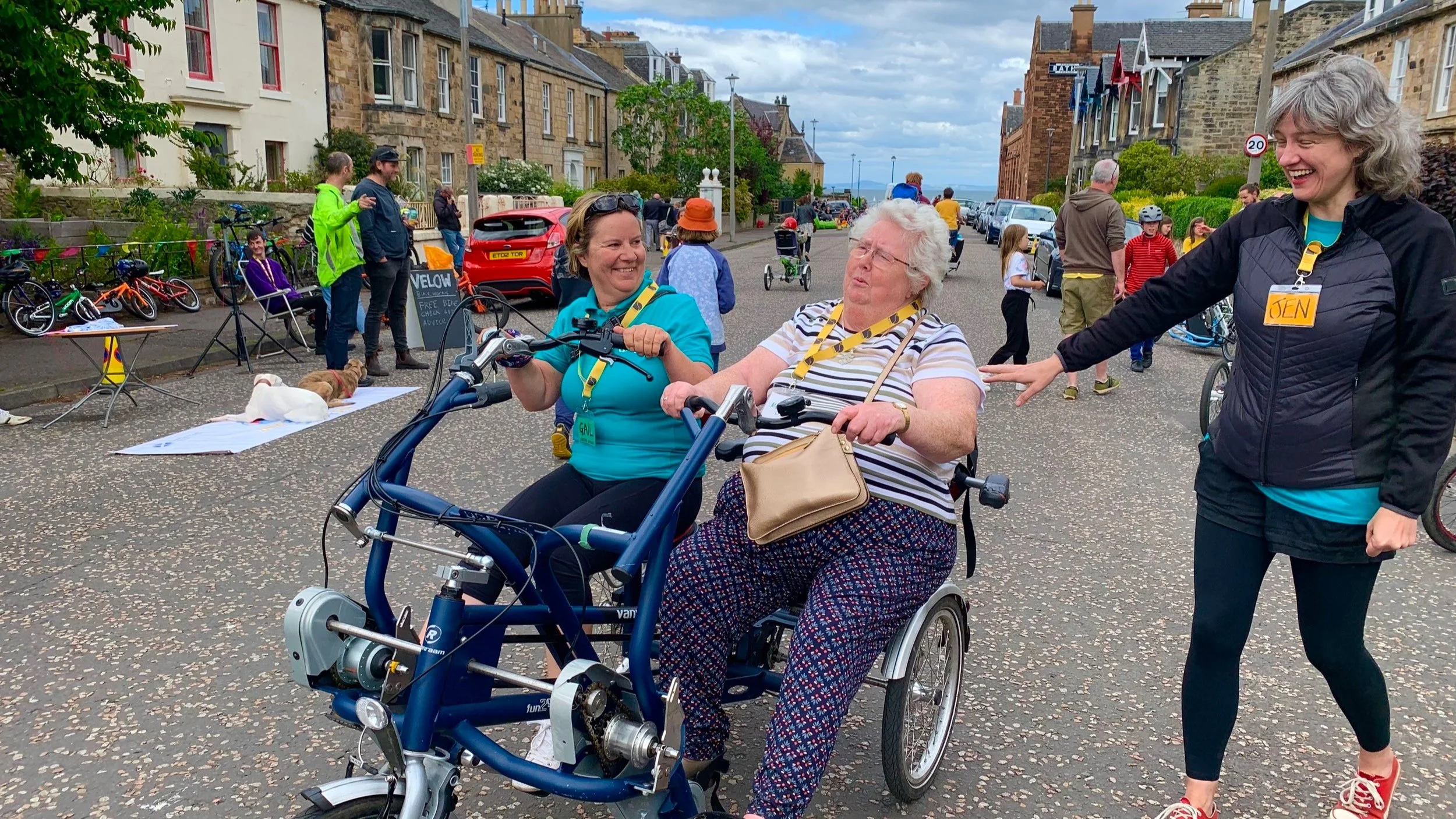Bike saddle libraries – enabling women to cycle comfortably
A community-led saddle library in Portobello- supporting women to cycle comfortably
Cycling gets you further, faster and healthier. However, across the UK, US and Canada, two-wheeled commuting is largely dominated by men.[i] Indeed, just 11% of women in the UK cycle at least once a week, compared to 23% of men.[ii] Research has continuously emphasised that this is mainly due to lack of protective infrastructure, leaving women feeling unsafe to cycle.[iii] [iv]
In my recent research conducted through walking interviews with 274 women in Edinburgh Glasgow and Perth, which culminated in the book What of Women Designed the City, participants identified key leverage points to enable greater participation of women in cycling. Embedded in their everyday experience of the city, the participating women were invited to reveal existing and potential opportunities for bringing more vitality and viability into their urban worlds.
As active travel trends globally, more gender-sensitive cycling infrastructure is needed. Encouraging cycling isn’t enough, we also need to enable it. For instance, there is a need for freshen up facilities for women who don’t want to arrive hot and sweaty after cycling to the office. In terms of appropriate lighting, in general, women cycle longer routes to avoid streets that don’t feel well-lit. Additionally, they only invest in bicycles if they know there is safe storage at active travel hubs, like train stations – ‘somewhere where I can leave my bike and be sure it will be there when I’m back’ as a woman I spoke with put it.
What comes first: infrastructure or behaviour change? For Donella Meadows, shifting physical infrastructure is usually the slowest and most expensive type of change to make in a system.
To support change in attitude, women came up with the idea of stimulating the debate and awareness around the health implications that inappropriate saddles and ill-fitting bikes can have on women’s bodies, particularly in the vulval area.
As women typically possess wider hips, ischial bones and smaller bodies, they generally benefit from wider saddles, allowing us to avoid injuries caused by pressure placed on the front of the genital area.[v] The soft tissue in the perineum is not structured to bear weight, particularly when bent-over assuming a riding position.[vi] Speaking to this, a participant recommended that bicycle shops develop a library of women-tailored saddles designed to respond to women’s anatomy, making cycling a more comfortable experience.
A true library of saddles was launched in Portobello
Recently such a library was opened at the heart of Portobello on the east coast of Scotland, about four miles east of Edinburgh city centre. The seaside neighbourhood has a distinct town centre, a residential area, a long sea-front promenade, and a reclaimed beach. Positioned at the heart of its promenade and curated by the collective Porty Community Energy, a library of women’s saddles was recently inaugurated. Porty Energy actively engages in reducing carbon emissions and helping the community’s transition to low carbon transport through electric bikes and cargo-bikes schemes. The library of saddles is a critical new service that they offer to women at the community.
Finding the right saddle that fits your bottom and supports your weight should be a priority for all women cyclists, young or more mature, whether taking a long commute or enjoying a recreational trip.
Bike seats, while advancing new materials and designs, has historically been the same for men and women. This leverage point is about crossing the threshold of what the author of Invisible Women, Caroline Criado Perez, calls the ‘male default thinking’ which seem too often to inform the decisions of designers of bicycles and tricycles.
In a world designed with women in mind, ergonomically-appropriate saddles should respond to different women’s anatomies and be easily available in bike shops and communities everywhere. Portobello is delivering it.
Finding the right saddle that fits your bottom and supports your weight should be a priority for all women cyclists,
My book What if Women Designed the City? 33 leverage points to make your city work better from women and girls can be ordered from Triarchy Press.
[i] Heinen, E., van Wee, B. & Maat, K. (2010). Commuting by bicycle: An overview of the literature. Transport Reviews, 30:1, pp 59–96.
[ii] SUSTRANS (2022). Is separate equal? Single-sex cycling spaces and gender equality [online] Available at: https://www.sustrans.org.uk/our-blog/opinion/2022/august/is-separate-equal-single-sex-cycling-spaces-and-gender
[iii] Leva, M.C., Ababio-Donkor, A., & Thimnu, A. (2021) Gender and Equality in Transport. Proceedings of the 2021 Travel Demand Management Symposium. Technological University Dublin.
[iv] Heesch, K.C., Sahlqvist, S. & Garrard, J. (2012). Gender differences in recreational and transport cycling: a cross-sectional mixed-methods comparison of cycling patterns, motivators, and constraints. Int J Behav Nutr Phys Act, 9: 106.
[v] Broadbent, B. (2020) Finding a comfortable saddle. BBC Women’s Hour. [online] Available at: https://www.bbc.co.uk/sounds/play/m000l8lh
[vi] Women who Cycle (2019). Commonly asked question – What is the best women’s bike saddle? [online] Available at: https://womenwhocycle.com/what-is-the-best-womens-bike-saddle/
[vii] Perez, C.C. (2019). Invisible Women - Exposing Data Bias in a Word Designed for Men. Penguin Random House.



